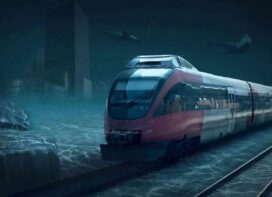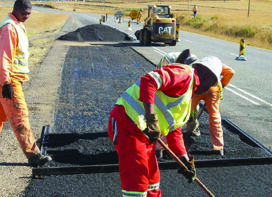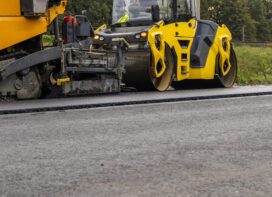Geological & and geotechnical testing is important to understand subsurface layers and prevent any failures in tunnel construction. Prof. Dr P. Anbazhagan, Associate Professor in the Civil Engineering Department of Indian Institute of Science, Bengaluru, and Geethanjali Monto elaborate.
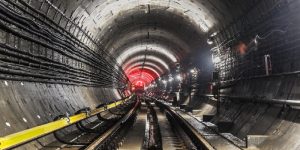
The history of underground tunnelling may date back to ancient civilizations, with prehistoric people attempting to enlarge their caves. The Britannica Encyclopaedia talks about Babylonian tunnels used for irrigation; Egyptian techniques used for cutting soft rocks, utilized later for excavating temple rooms; Greek and Roman tunnels for water aqueducts; the Pausilippo tunnel spanning between Naples and Pozzuoli, which incorporated ventilation; the Canal du Midi tunnel (a section of the first tunnel connecting the Atlantic Ocean and the Mediterranean Sea), which used explosives for tunnelling; the Bridgewater Canal Tunnel used to carry coal from the Worsley mine to Manchester; the tunnel of the Manchester-Sheffield Railroad, England; the tunnel on the Allegheny Portage Railroad, United States; the Hoosac Tunnel, which used dynamite, electric firing of explosives, power drills, steam and air; the Mont Cenis Tunnel, which used rail-mounted drill carriages and hydraulic ram air compressors; the Wapping-Rotherhithe Tunnel under the Thames River, which used a protective shield; the London subway using the shield and compressed air techniques; vehicular tunnels such as the Lincoln and Queens tunnels in New York and machine-mined tunnels at Oahe dam on Missouri River, using a mechanical rotary excavator.
The appeal of underground tunnels—especially with increasing populations worldwide—is partly due to the advantages they offer in terms of conserving space above ground and covering the distance between two points using the shortest possible route. However, underground construction has to account for the type and engineering properties of the material that has to be worked with and also the purpose of construction. The design and construction method of tunnels depend primarily on the on-site geological conditions.
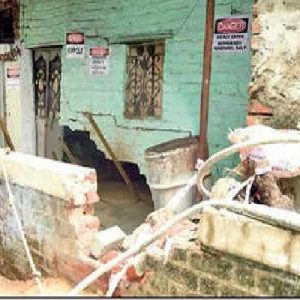 Unlike concrete and steel, whose engineering properties are tailored as per requirement, soil is a medium whose properties depend on the natural weathering process that it has been subjected to, whether it stays in its place of formation or is transported to a new place, the various layers along its depth, whether it is loosely packed or composed of hard rock particles, the ratio of air, water and particles in the medium, environmental conditions, and loading and drainage conditions. While steel and concrete can be inspected and tested thoroughly before use, representative soil testing is difficult given its heterogeneous nature and variation with depth and location. The behaviour of soil changes as the positions of particles, which can move relative to one another, change.
Unlike concrete and steel, whose engineering properties are tailored as per requirement, soil is a medium whose properties depend on the natural weathering process that it has been subjected to, whether it stays in its place of formation or is transported to a new place, the various layers along its depth, whether it is loosely packed or composed of hard rock particles, the ratio of air, water and particles in the medium, environmental conditions, and loading and drainage conditions. While steel and concrete can be inspected and tested thoroughly before use, representative soil testing is difficult given its heterogeneous nature and variation with depth and location. The behaviour of soil changes as the positions of particles, which can move relative to one another, change.
Soil behaviour and strength can be altered by changing the other two associated phases of soil – water and air. This means that increasing or decreasing air and or water can affect soil behaviour and strength at a particular place. Injection and extraction of water and/gas are very common in urban areas due to natural or human activities.
Rigorous geological and geotechnical testing is important to understand subsurface layers and arrive at proper design parameters. Proper investigation can help in preventing failure of underground constructions as the medium would be influenced by other key factors such as initial defects in the rock, weak beds, areas weakened by weathering or thermal action, flow and pressure of groundwater and earthquake risk. The construction method would need to be modified as the work progresses and as the properties of the soil are understood better. Dr K. R. Arora, in his book Soil Mechanics and Foundation Engineering says: “The design and construction of underground structures, such as tunnels, shafts, and conduits, require evaluation of forces exerted by the soil on these structures.”
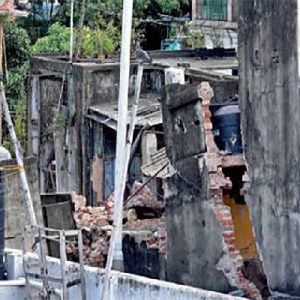 There has been an increasing preference for underground transportation systems due to the high demand for mobility particularly in urban areas, increasing vehicular traffic and consequently increased road congestion and travel times, and air pollution. The major underground system practiced in most of the urban centres in the world is the underground metros. Metros are constructed underground as well as above ground. The above-ground metros are covered under structural engineering that takes care of all aspects. When it comes to the underground, tunnelling is done using the tunnel boring machine (TBM), which has to go through different soil mediums starting from very loose material to very hard rock stratum. Depending on the material where the tunnel is made, the tunnelling operation may create a sequence of undesirable events in urban areas. For example, there are many underground metro constructions going on in several cities of India, particularly in cities that are densely populated. If the subsurface material is favourable for TBM operation, there may not be any issues.
There has been an increasing preference for underground transportation systems due to the high demand for mobility particularly in urban areas, increasing vehicular traffic and consequently increased road congestion and travel times, and air pollution. The major underground system practiced in most of the urban centres in the world is the underground metros. Metros are constructed underground as well as above ground. The above-ground metros are covered under structural engineering that takes care of all aspects. When it comes to the underground, tunnelling is done using the tunnel boring machine (TBM), which has to go through different soil mediums starting from very loose material to very hard rock stratum. Depending on the material where the tunnel is made, the tunnelling operation may create a sequence of undesirable events in urban areas. For example, there are many underground metro constructions going on in several cities of India, particularly in cities that are densely populated. If the subsurface material is favourable for TBM operation, there may not be any issues.
However, loose, weak and heterogeneous subsurface layers may bring about ground subsidence, formation of cavities, excessive vibration and cracks in houses in the area above the tunnels and in nearby areas. This results in undesirable events of ground subsidence, formation of cavities, excessive vibration and cracks in houses during underground tunnelling operations. Sometimes, even after construction, because the metro trains run at continuous and different speeds, depending on the soil around the metro tunnels, the waves created by the metro trains get amplified; this causes discomfort to people in nearby residences due to excessive vibrations. This phenomenon also causes ground subsidence and cracks.
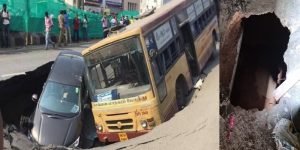
During the construction of an underground tunnel for the Ahmedabad Metro (stretching from Apparel Park to Shahpur), the residents of Gomtipur municipal corporation staff quarters (~150m from Apparel Park) experienced vibrations. On the night of 17th August 2018, the underground water tank had developed cracks, with a major land subsidence reported on 18th morning. Around 13 families were evacuated on 18th night and the cave-in was fixed with cement and concrete.
On 31 August 2019, one of the tunnel boring machines used for tunnelling in the construction of the Kolkata East-West Metro Line 1 hit an aquifer. This led to flooding of the tunnel and TBM due to severe water leakage and sand, and triggered major subsidence. Forty buildings in the area collapsed or developed notable cracking; hundreds of people had to vacate their homes.
The running of trains in the Chennai underground metro has caused vibrations and cracks in the residences of twenty families in Thiruvika colony of Shenoy Nagar. The residents have complained of seepage, cracks, pipe breakage, uneven floors and short circuits due to metro rail work since the beginning of construction in 2013 till the extension of the line from Nehru Park to Chennai Central (in 2018).
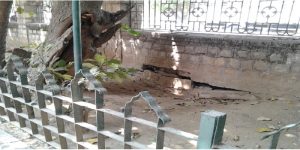
The first underground metro rail service in India started in Kolkata in 1984. The country has witnessed continuous growth in metro rail services and as on 25 December 2017, the total operational length is 425.95 km across the country; as on 31 July 2017, the total under-construction length is 277.32 km and the total proposed metro length is 764.3 km (according to the Metro Rail News). Given the enormous advantages in using underground metros in India, from the environmental, economic and mobility perspectives, it is imperative that rigorous soil investigations and geological testing be done to ensure its safety. The authors would address these issues in sequel articles dealing with undeniable events during underground metro construction in India and how they can be prevened by the integrated subsurface investigation techniques developed and followed by the Indian Institute of Science, Bengaluru for several important projects.
 TrafficInfraTech Magazine Linking People Places & Progress
TrafficInfraTech Magazine Linking People Places & Progress
